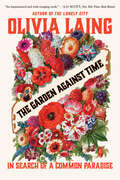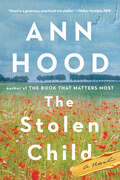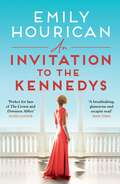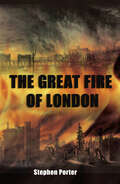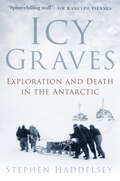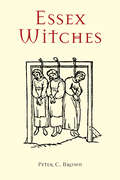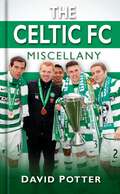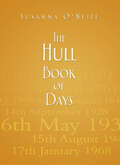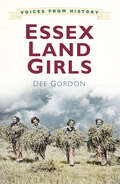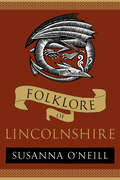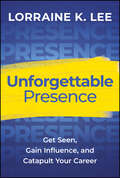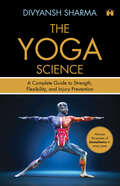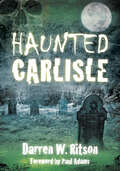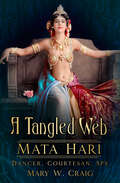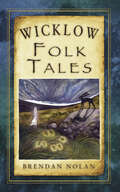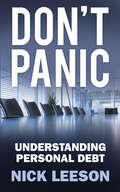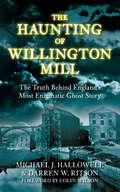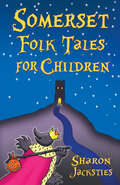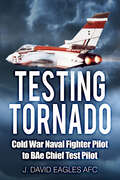- Table View
- List View
The Garden Against Time: In Search of a Common Paradise
by Olivia LaingFinalist for the 2024 Kirkus Prize for Nonfiction Finalist for the 2024 Wainwright Prize for Nature Writing A #1 Sunday Times (UK) Bestseller • A New York Times Book Review Editors' Choice • A Kirkus Reviews "Best Book of the 21st Century (So Far)" • A New Yorker Best Book of 2024 • A Chicago Public Library Must-Read Book of 2024 • An Oprah Daily "Most Thought-Provoking Book" of 2024 "An impassioned and wide-ranging work." —A.O. Scott, New York Times Book Review Inspired by the restoration of her own garden, "imaginative and empathetic critic" (NPR) Olivia Laing embarks on an exhilarating investigation of paradise. In 2020, Olivia Laing began to restore an eighteenth-century walled garden in Suffolk, an overgrown Eden of unusual plants. The work brought to light a crucial question for our age: Who gets to live in paradise, and how can we share it while there’s still time? Moving between real and imagined gardens, from Milton’s Paradise Lost to John Clare’s enclosure elegies, from a wartime sanctuary in Italy to a grotesque aristocratic pleasure ground funded by slavery, Laing interrogates the sometimes shocking cost of making paradise on earth. But the story of the garden doesn’t always enact larger patterns of privilege and exclusion. It’s also a place of rebel outposts and communal dreams. From the improbable queer utopia conjured by Derek Jarman on the beach at Dungeness to the fertile vision of a common Eden propagated by William Morris, new modes of living can and have been attempted amidst the flower beds, experiments that could prove vital in the coming era of climate change. The result is a humming, glowing tapestry, a beautiful and exacting account of the abundant pleasures and possibilities of gardens: not as a place to hide from the world but as a site of encounter and discovery, bee-loud and pollen-laden.
The Stolen Child: A Novel
by Ann Hood“Hood is a generous, practiced storyteller.” —Heller McAlpin, NPR An unlikely duo ventures through France and Italy to solve the mystery of a child’s fate in this moving, page-turning novel from “a gifted storyteller” (People). For decades, Nick Burns has been haunted by a decision he made as a young soldier in World War I, when a French artist he’d befriended thrust both her paintings and her baby into his hands—and disappeared. In 1974, with only months left to live, Nick enlists Jenny, a college dropout desperate for adventure, to help him unravel the mystery. The journey leads them from Paris galleries and provincial towns to a surprising place: the Museum of Tears, the life’s work of a lonely Italian craftsman. Determined to find the baby and the artist, hopeless romantic Jenny and curmudgeonly Nick must reckon with regret, betrayal, and the lives they’ve left behind. With characteristic warmth and verve, Ann Hood captures a world of possibility and romance through the eyes of a young woman learning to claim her place in it. The Stolen Child is an engaging, timeless novel of secrets, love lost and found, and the nature of forgiveness.
An Invitation to the Kennedys: Captivating pre-WW2 historical fiction about high society, forbidden love and a world on the cusp of change, inspired by real events
by Emily Hourican'Perfect for fans of The Crown and Downton Abbey ' Hazel Gaynor, bestselling author of The Last Lifeboat'A breathtaking, glamorous and escapist read' Irish TimesLondon 1938: Daughter of the US ambassador, Kathleen 'Kick' Kennedy is a huge hit in society's most elite circles, though she isn't always sure she fits in. While Kick is falling for duke-in-waiting Billy Cavendish, a man her parents will never let her marry, across the city Lady Brigid Guinness has no interest in love or society connections. But her ambitious brother-in-law has other ideas and seems determined to engineer a match with a German prince.When they are invited to an exclusive gathering at a country estate, the young women soon form an unlikely friendship: the stuck-up aristocrat and the brash American. Then Billy and Prince Fritzi join the party, and tensions rise as Kick and Brigid discover that beneath the group's façade of politeness, nothing is as it seems.As the days at Kelvedon Hall pass in a haze of sunshine, secrecy and surprising revelations, Kick and Brigid beginto rethink their hopes and plans for the future. Do they still want what they once did? And with the world aroundthem constantly shifting, as war in Europe looms, will they ever be able to have it?
The Great Fire of London
by Stephen PorterThe Great Fire of London was the greatest catastrophe of its kind in Western Europe. Although detailed fire precautions and firefighting arrangements were in place, the fire raged for four days and destroyed 13,200 houses, 87 churches, and 44 of the City of London's great livery halls. The great fire of 1666 closely followed by the great plague of 1665; as the antiquary Anthony Wood wrote left London "much impoverished, discontented, afflicted, cast downe." In this comprehensive account, Stephen Porter examines the background to 1666, events leading up to and during the fire, the proposals to rebuild the city, and the progress of the five-year programme which followed. He places the fire firmly in context, revealing not only its destructive impact on London but also its implications for town planning, building styles, and fire precautions both in the capital and provincial towns.
Icy Graves: Exploration and Death in the Antarctic
by Stephen HaddelseyEver since Captain Cook sailed into the Great Southern Ocean in 1773, mankind has sought to push back the boundaries of Antarctic exploration. The first expeditions tried simply to chart Antarctica’s coastline, but then the Sixth International Geographical Congress of 1895 posed a greater challenge: the conquest of the continent itself. Many would die in the attempt. Icy Graves uses the tragic tales not only of famous explorers like Robert Falcon Scott and Aeneas Mackintosh, but also of many lesser-known figures, both British and international, to plot the forward progress of Antarctic exploration. It tells, often in their own words, the compelling stories of the brave men and women who have fallen in what Sir Ernest Shackleton called the ‘White Warfare of the South’.
Essex Witches
by Peter C. BrownMedieval folk had long suspected that the Devil was carrying out his work on earth with the help of his minions. In 1484 Pope Innocent VIII declared this to be true, which resulted in witch-hunts across Europe which lasted for nearly 200 years. In 1645, England (notably Essex) was in the grip of witch fever. Between 1560 and 1680 in Essex alone 317 women and 23 men were tried for witchcraft, and over 100 were hanged. Essex Witches recounts many of the local common folk who were tried in the courts for their beliefs and practice in herbal remedies and potions, and for causing, often by their familiars, the deaths of neighbours and even family members, and had meted out the harshest penalties for their sorcery and demonic ways.
The Celtic FC Miscellany
by David W PotterCeltic is an unusual football club, inspiring strong feelings in almost everyone. It is of course virtually impossible to chronicle all that has happened in the history of the club, but this little gem draws together some of the most interesting, quirky and downright odd events that have taken place over their long and auspicious existence. Packed with facts, stats, trivia, stories and legend, the reader will delve deep to find out all about the events and people who have shaped the club into what it is today. Featured here are a plethora of stories on this charismatic football club ranging from how the club was formed, to little-known facts about players and managers. Here you will find player feats, individual records and plenty of amusing quotes. Rivalry with Rangers, favourite managers and cult heroes from yesteryear – a book no true Celtic fan should be without.
The Hull Book of Days
by Susanna O'NeillTaking you through the year day by day, The Hull Book of Days contains quirky, eccentric, amusing and important events and facts from different periods in the history of the city. Ideal for dipping into, this addictive little book will keep you entertained and informed. Featuring hundreds of snippets of information gleaned from the vaults of Hull’s archives and covering the social, criminal, political, religious, industrial, military and sporting history of the city, it will delight residents and visitors alike.
Voices from History: Essex Land Girls
by Dee GordonAs much as 70 per cent of Essex is agricultural, and given its proximity to the capital it is not surprising that so many members of the Women’s Land Army found themselves on Essex farms and in Essex fields during the two world wars, doing their bit to make sure that Britain did not starve. This book not only includes interviews with some of the last surviving land ‘girls’ but also contains a wealth of material unearthed in diaries, letters and in the stories handed down from one generation to the next about women in Essex who were, literally, wearing the trousers. They were not all local girls, and many arrived from the cities never having seen a cow or a tractor before. But the British spirit persevered, and the wit and camaraderie that served us so well during those tumultuous years shines through in every story.
Folklore of Lincolnshire (Folklore)
by Susanna O'NeillThe county of Lincolnshire is a beautiful mixture of low-lying marshy fen land, modest hills and the steep valleys of the rolling Wolds. It is also home to a wealth of folklore, legend and intrigue. With one of the most interesting dialects in the country, this vast region is also rich in superstitions, songs and traditional games.A study of the daily life, lore and customs of Lincolnshire are here interspersed with stories of monstrous black hounds, dragon lairs, witches, Tiddy Mun, mischievous imps and tales of the people known as Yellowbellies. This fully illustrated book explores the origins and meanings of Lincolnshire’s traditions and shows how the customs of the past have influenced the ways of the present.
Unforgettable Presence: Get Seen, Gain Influence, and Catapult Your Career
by Lorraine K. LeeSelected as a Next Big Idea Club Must Read Are you an ambitious hard worker and high-achiever—but feeling stuck, unseen, and struggling to move up in your career? Being great at your job isn't enough anymore. In today's competitive workplace, ambitious professionals need to master both how and where they show up if they want to stand out and be recognized. Lorraine K. Lee knows this journey firsthand. As a shy, overlooked introvert who became a sought-after keynote speaker, she discovered that success comes not from working harder, but from being intentional about your professional presence. Through her role as a founding editor at LinkedIn and work with Fortune 500 companies, she's helped millions of professionals develop an intentional, powerful presence that takes them from invisible to unforgettable. Drawing from research-backed principles, personal anecdotes, and insights from interviews with dozens of industry leaders, including bestselling author Daniel Pink and Radical Candor's Kim Scott, Unforgettable Presence teaches you how to: Master virtual presence using proven frameworks for standing out in today’s workplace Deliver impactful presentations with confidence and authority Develop executive presence at any career stage Leverage LinkedIn to stay top-of-mind and be recognized for your expertise Transform your team’s presence and impact as a leader Give and receive feedback that inspires change Lead meetings that your teammates don’t dread This guide introduces practical frameworks to help you build influence and be seen as a leader, and gives you concrete tools to increase your impact immediately. You'll learn to communicate with confidence, build strategic relationships, and advocate for yourself and your team effectively. Whether you're an introvert seeking greater visibility or a leader looking to amplify your team's impact, Unforgettable Presence provides the proven frameworks and practices to ensure you're remembered for all the right reasons. It's time to take control of your career trajectory by mastering both how and where you show up so that you can create a presence that makes you truly unforgettable.
The Yoga Science
by Divyansh SharmaEmbark on a transformative journey through yoga with this comprehensive guide, which beautifully blends ancient wisdom with modern science. Exploring fascinating topics like calorie burn, injury prevention, muscle strength, and bio-individuality, the book reveals how yoga surpasses conventional exercise in functionality and safety. The Yoga Science serves as an invaluable resource for both seasoned practitioners and beginners, enhancing your practice while deepening your appreciation for the timeless wisdom of yoga.Discover the evidence-backed secrets of yoga, with over 50 asanas thoughtfully categorised into 10 distinct types, from foundational to advanced poses. Each asana includes essential details, such as unique attributes, and benefits for various organ systems, targeted areas, and major muscles, along with step-by-step techniques, complete with modifications for all abilities.Rooted in both yogic scriptures and contemporary science, this complete guide offers a fresh perspective on how yoga can empower your body, mind, and soul—tailored to meet your personal needs and goals.What You&’ll Find Inside:• The History of Yoga: Uncover the birthplace of yoga and how it evolved over centuries.• The Meaning of Yoga: More than just stretching! Learn what yoga truly means and its different definitions.• Beginner&’s Guide: Start your yoga journey with the basics—place, equipment, and best practices.• Dimensions of Health: Explore the WHO and yogic perspectives on health.• Alignment & Asanas: Dive into the science of movement and master 50+ asanas with ease.• Biomechanics Breakdown: Learn how your body works through each pose with a fun take on organ systems and joint angles.Plus! A special chapter on tackling common yoga questions and debunking popular myths (no, it won&’t make you taller!).
Swamy Vivekanandara Jeevana Mattu Sandesha: ಸ್ವಾಮಿ ವಿವೇಕಾನಂದರ ಜೀವನ ಮತ್ತು ಸಂದೇಶ
by Swami Vivekananda Kendra Kannada Prakashana Mysoreಈ ಪುಸ್ತಕದಲ್ಲಿ ಸ್ವಾಮಿ ವಿವೇಕಾನಂದರ ಜೀವನ, ಅವರ ಉಪದೇಶಗಳು ಹಾಗೂ ಆಧ್ಯಾತ್ಮಿಕತೆ, ಶಿಕ್ಷಣ ಮತ್ತು ಸಮಾಜದ ಮೇಲಿನ ಅವರ ಅಪಾರ ಪರಿಣಾಮವನ್ನು ಸ್ಪಷ್ಟವಾಗಿ ವಿವರಿಸಲಾಗಿದೆ. ಅವರ ಆದರ್ಶಗಳು ಮತ್ತು ಚಿಂತನೆಗಳು ಇಂದಿನ ಪೀಳಿಗೆಗೆ ಪ್ರೇರಣೆಯ ಮೂಲವಾಗಿದ್ದು, ಈ ಕೃತಿಯು ಓದುಗರಿಗೆ ಆಧ್ಯಾತ್ಮಿಕ ಬೆಳವಣಿಗೆ ಮತ್ತು ಸಾಮಾಜಿಕ ಜಾಗೃತಿಗೆ ದಾರಿ ತೋರಿಸುವ ಉದ್ದೇಶವನ್ನು ಹೊಂದಿದೆ.
Sociology Masters of Social Thought Course-5 Block 1-4 - Karnataka University
by Mysore Ksou MukthagangotriThis is an educational textbook developed for third-year Bachelor of Arts (BA) students studying in the English medium under the Karnataka State Open University (KSOU), Mukthagangotri, Mysore. It is designed to align with the university's curriculum, offering comprehensive content to support academic learning, critical thinking, and subject-specific understanding for distance education learners.
Jnaana Samhita Masapatrike-March 2025: ಜ್ಞಾನ ಸಂಹಿತಾ ಮಾಸಪತ್ರಿಕೆ-ಮಾರ್ಚ್ 2025
by Sharada and Mitrajyothi Teamಈ ನಿಯತಕಾಲಿಕೆವು ವಿವಿಧ ವಿಷಯಗಳ ಸಂಗ್ರಹವನ್ನು ಒಳಗೊಂಡಿದೆ – ಸಾಮಾನ್ಯ ಜ್ಞಾನ, ಪ್ರಸ್ತುತ ವ್ಯವಹಾರಗಳು, ರುಚಿಕರ ಪಾಕವಿಧಾನಗಳು ಹಾಗೂ ಮನರಂಜನೆಯ ಜೋಕ್ಸ್ಗಳು. ಪ್ರತಿ ಸಂಚಿಕೆಯಲ್ಲಿ ಓದುಗರಿಗೆ ಮಾಹಿತಿಯೊಂದಿಗೆ ಮನರಂಜನೆಯ ಅನುಭವವನ್ನು ಒದಗಿಸುವ ಉದ್ದೇಶ ಹೊಂದಿದ್ದು, ಎಲ್ಲ ವಯೋಮಾನದ ಓದುಗರಿಗೂ ಉಪಯುಕ್ತವಾಗುವಂತಹ ವಿಷಯಗಳನ್ನೆಲ್ಲಾ ಸಮರ್ಪಕವಾಗಿ ಒಟ್ಟುಗೂಡಿಸುತ್ತದೆ.
Himalaya Guruvina Garadiyalli: ಹಿಮಾಲಯ ಗುರುವಿನ ಗರಡಿಯಲ್ಲಿ
by Dr Nayana Kashyapಈ ಪುಸ್ತಕವು ಒಬ್ಬ ಆಧ್ಯಾತ್ಮಿಕ ನಾಯಕರ ಜೀವನಚರಿತ್ರೆ, ಉಪದೇಶಗಳು ಮತ್ತು ಸಮಾಜದ ಮೇಲೆ ಅವರ ಬೀರುವ ಪ್ರಭಾವವನ್ನು ವಿವರಿಸುತ್ತದೆ. ಅವರ ಆಧ್ಯಾತ್ಮಿಕ ಜ್ಞಾನ, ಭಕ್ತಿ ಮತ್ತು ಮೌಲ್ಯಪೂರ್ಣ ಸಂದೇಶಗಳನ್ನು ಸುಲಭವಾಗಿ ಅರ್ಥವಾಗುವ ರೀತಿಯಲ್ಲಿ ನಿರೂಪಿಸುವ ಮೂಲಕ, ಈ ಕೃತಿ ಓದುಗರಲ್ಲಿ ಆತ್ಮಚಿಂತನೆಯನ್ನು ಉಣ್ಣಿಸುವ ಉದ್ದೇಶವನ್ನು ಹೊಂದಿದೆ.
Economics of Development Course-5 Block 1-4 - Karnataka University
by Karnataka State Open University Mukthagangagothri MysoreThis educational textbook is designed for third-year Bachelor of Arts (BA) students studying in the English medium under the Karnataka State Open University (KSOU), Mukthagangotri, Mysore. It provides a structured and comprehensive approach to the prescribed curriculum, aiming to enhance students’ understanding of key literary concepts, critical analysis, and language skills. The content is tailored to suit open and distance learning methods, supporting independent study while aligning with academic standards and university requirements.
Haunted Carlisle
by Darren W. RitsonThis new book contains a chilling collection of eyewitness accounts and terrifying tales from in and around Carlisle which is sure to appeal to everyone interested in the supernatural history of the city. Illustrated with over 60 pictures, these spooky stories include the headless spectre of Carlisle railway station, the phantom boy of Corby Castle, and the ghostly highwayman of Barrock Park, among many others. For those who dare to read it, Haunted Carlisle is guaranteed to make your blood run cold.
A Tangled Web: Dancer, Courtesan, Spy
by Mary CraigIn this new biography, published to coincide with the 100th anniversary of her execution, Mata Hari is revealed in all of her flawed eccentricity; a woman whose adult life was a fantastical web of lies, half-truths and magnetic sexuality that captivated men. Following the death of a young son and a bitter divorce, Mata Hari reinvented herself as an exotic dancer in Paris, before finally taking up the life of a courtesan. She could have remained a half-forgotten member of France’s grande horizontale were it not for the First World War and her disastrous decision to become embroiled in espionage. What happened next was part farce and part tragedy that ended in her execution in October 1917. Recruited by both the Germans and the French as a spy, Mata Hari – codenamed H-21 – was also almost recruited by the Russians. But the harmless fantasies and lies she had told on stage had become part of the deadly game of double agents during wartime. Struggling with the huge cost of war, the French authorities needed to catch a spy. Mata Hari, the dancer, the courtesan, the fantasist, became the prize catch.
Insights-II (Basic English Textbook and Workbook B.Com. Semester-II)
by Dr P. B. Teggihalli Kavita KusugalInsights–II is a combined textbook and workbook designed for B.Com. second semester students of Rani Channamma University. It focuses on building a strong foundation in Basic English, incorporating grammar, vocabulary, reading comprehension, and writing skills. The book is structured to support both classroom learning and self-study, offering practical exercises and activities aimed at enhancing students’ communication abilities in academic and professional contexts.
Wicklow Folk Tales
by Brendan NolanWicklow is full of stories, from the farmer returned from market to find he was dead and buried, to the mysterious bird who turned into a beautiful wife long missing from the glens. In this rich collection of tales from the county, you may find the cure for baldness, or learn if it is wise to leave a sleeping army lie in Rathdrum. You will find smugglers in Bray, and a maiden who set her cap at a saint in the making in Glendalough. Wicklow has as many stories as there are people travelling its roads, and a wealth of them are gathered together here in this unique volume.
Don't Panic: Understanding Personal Debt
by Nick LeesonThe issue of personal insolvency, how individuals can address its various aspects, what steps they can take and what options are available to them, is one of the most pressing issues in Irish society at the present time. This aim of this book is to provide answers, direction and, above all, reassurance, to those people affected by what has become a very common problem. Taking in the new insolvency legislation and its implications, together with providing details of the many available avenues for assistance, this book provides factual and professional advice to those who need it most.
The Haunting of Willington Mill: The Truth Behind England's Most Enigmatic Ghost Story
by Michael J Hallowell Darren W. RitsonDuring the nineteenth century Willington Mill, near Wallsend gained an infamous reputation for being haunted. Bizarre noises, apparitions and poltergeist activity dogged the premises and were experienced by dozens of credible witnesses. The case attracted the interest of the country's leading psychical researchers of the time, but the mystery was never solved - until now. Using a wide variety of contemporary sources along with cutting-edge investigative techniques, Michael J. Hallowell and Darren W. Ritson have pieced together the true story of Willington Mill. As well as detailing the fascinating phenomena that occurred in the building, The Haunting of Willington Mill is at last able to offer an explanation for one of England's most enigmatic and puzzling hauntings.
Somerset Folk Tales for Children
by Sharon JackstiesWhen you are in Somerset you are never far from mysterious caverns, whispering woods, hidden valleys and places which can’t decide whether they are seascapes or landscapes. The ancient Kings Arthur and Alfred hid amongst Somerset’s secret waterways, waging the wars and making treaties that forged Britain’s history. Outlaws and highwaymen lived on the wildest of moors that plummet into the sea. Ordinary people farmed the land and fished the waters alongside the Little People, the Fair Folk, the fairies and goblins that were as tricksy and unchancy to meet as any smuggler… In this collection, professional storyteller Sharon Jacksties has selected and reworked tales for children aged 7–11 to discover.
Testing Tornado: Cold War Naval Fighter Pilot to BAe Chief Test Pilot
by J. David EaglesIt was early Cold War days when 17-year-old David Eagles applied to the Fleet Air Arm hoping to be a fighter pilot for his national service. He little imagined the career that would follow. After flying training with the US Navy and Australian Fleet Air Arm, he settled into Fleet Air Arm fighter pilot life. He progressed through Naval Test Pilot duties – where he was forced to eject from a Buccaneer during catapult launch trials – before joining British Aerospace and playing a major part in the cockpit design and flight-testing of the RAF’s first fly-by-wire and swing-wing aircraft, the Panavia Tornado. His other experiences include ditching a Firefly into the sea and the near loss of the first British Tornado prototype after a bird strike. Finally, after 6,000 flying hours in sixty different types of aircraft, Eagles finished his career by making the first flight of the EAP, the technology demonstrator for the new Eurofighter Typhoon. Vividly illustrated with photographs, documents and plans, this is a fascinating memoir of naval-flying and test-flying some of the world’s most iconic fighters.
